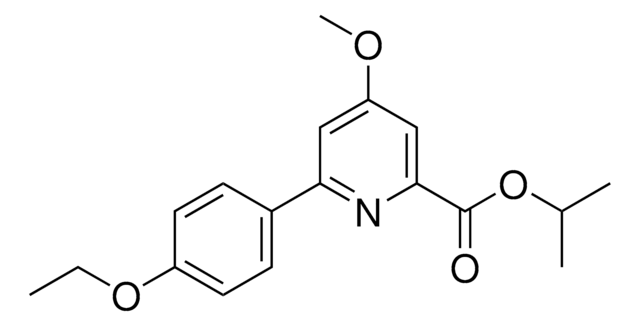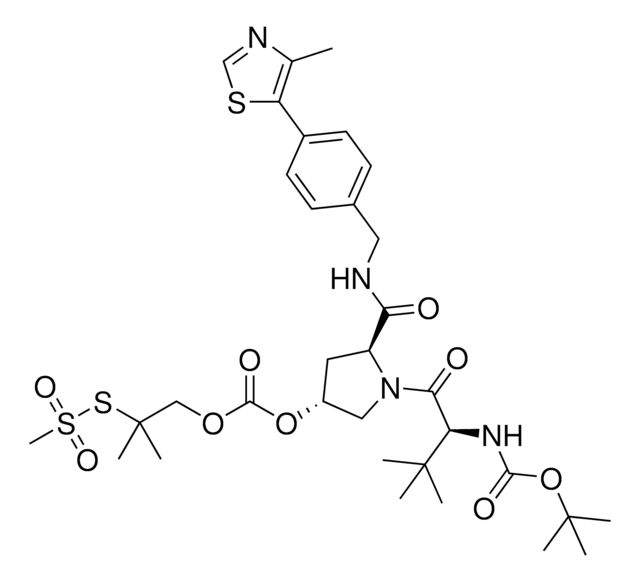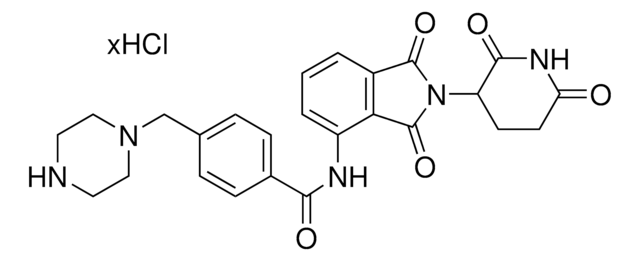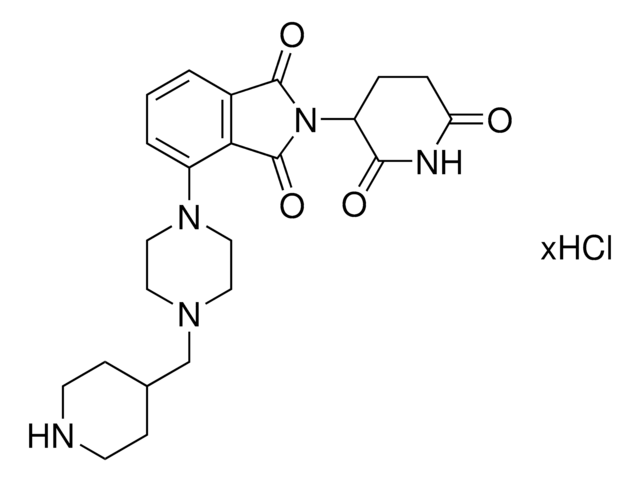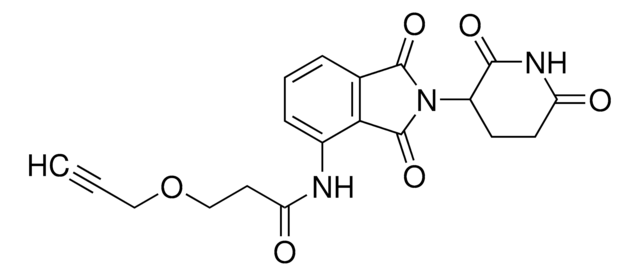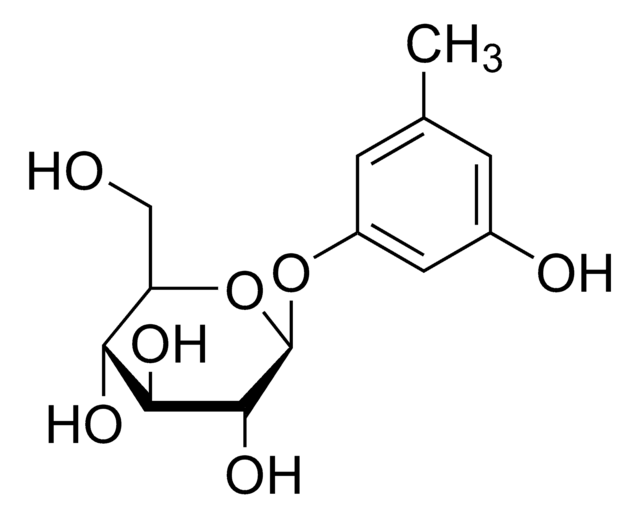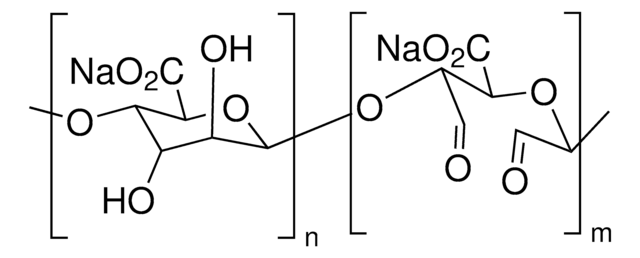927678
Pomalidomide-difluoroPEG1-C4-piperazine Hydrochloride
≥95%
Synonyme(s) :
2-(2,2-Difluoro-3-(4-(piperazin-1-yl)butoxy)propoxy)-N-(2-(2,6-dioxopiperidin-3-yl)-1,3-dioxoisoindolin-4-yl)acetamide hydrochloride
About This Item
Produits recommandés
ligand
pomalidomide
Niveau de qualité
Essai
≥95%
Forme
powder
Température de stockage
2-8°C
Chaîne SMILES
O=C(C(CC1)N(C2=O)C(C3=C2C=CC=C3NC(COCC(F)(F)COCCCCN4CCNCC4)=O)=O)NC1=O.Cl
Application
Targeted Protein Degradation
Mention d'avertissement
Danger
Mentions de danger
Conseils de prudence
Classification des risques
Repr. 1B
Code de la classe de stockage
6.1C - Combustible acute toxic Cat.3 / toxic compounds or compounds which causing chronic effects
Classe de danger pour l'eau (WGK)
WGK 3
Point d'éclair (°F)
Not applicable
Point d'éclair (°C)
Not applicable
Faites votre choix parmi les versions les plus récentes :
Certificats d'analyse (COA)
Désolés, nous n'avons pas de COA pour ce produit disponible en ligne pour le moment.
Si vous avez besoin d'assistance, veuillez contacter Service Clients
Déjà en possession de ce produit ?
Retrouvez la documentation relative aux produits que vous avez récemment achetés dans la Bibliothèque de documents.
Notre équipe de scientifiques dispose d'une expérience dans tous les secteurs de la recherche, notamment en sciences de la vie, science des matériaux, synthèse chimique, chromatographie, analyse et dans de nombreux autres domaines..
Contacter notre Service technique
